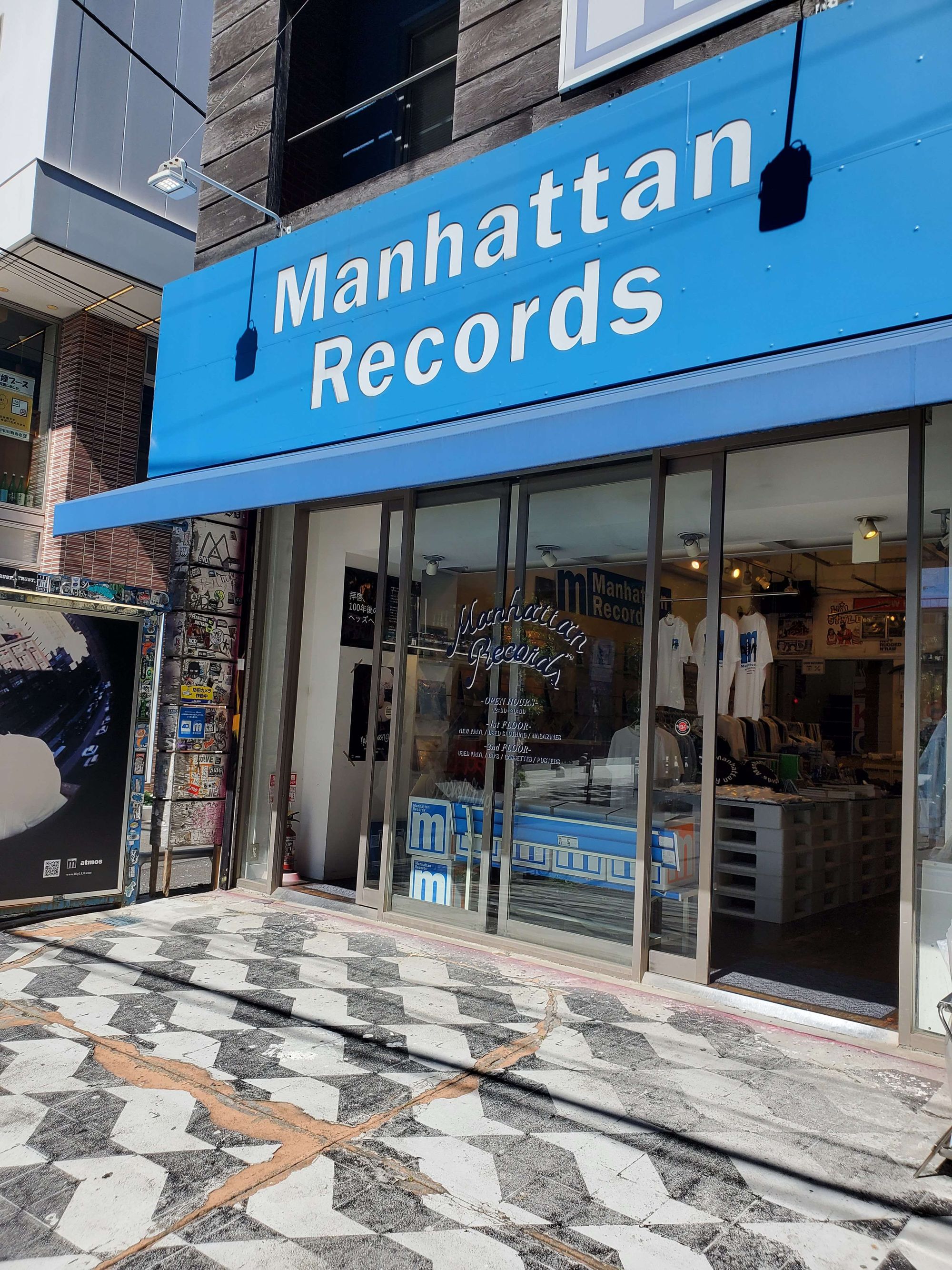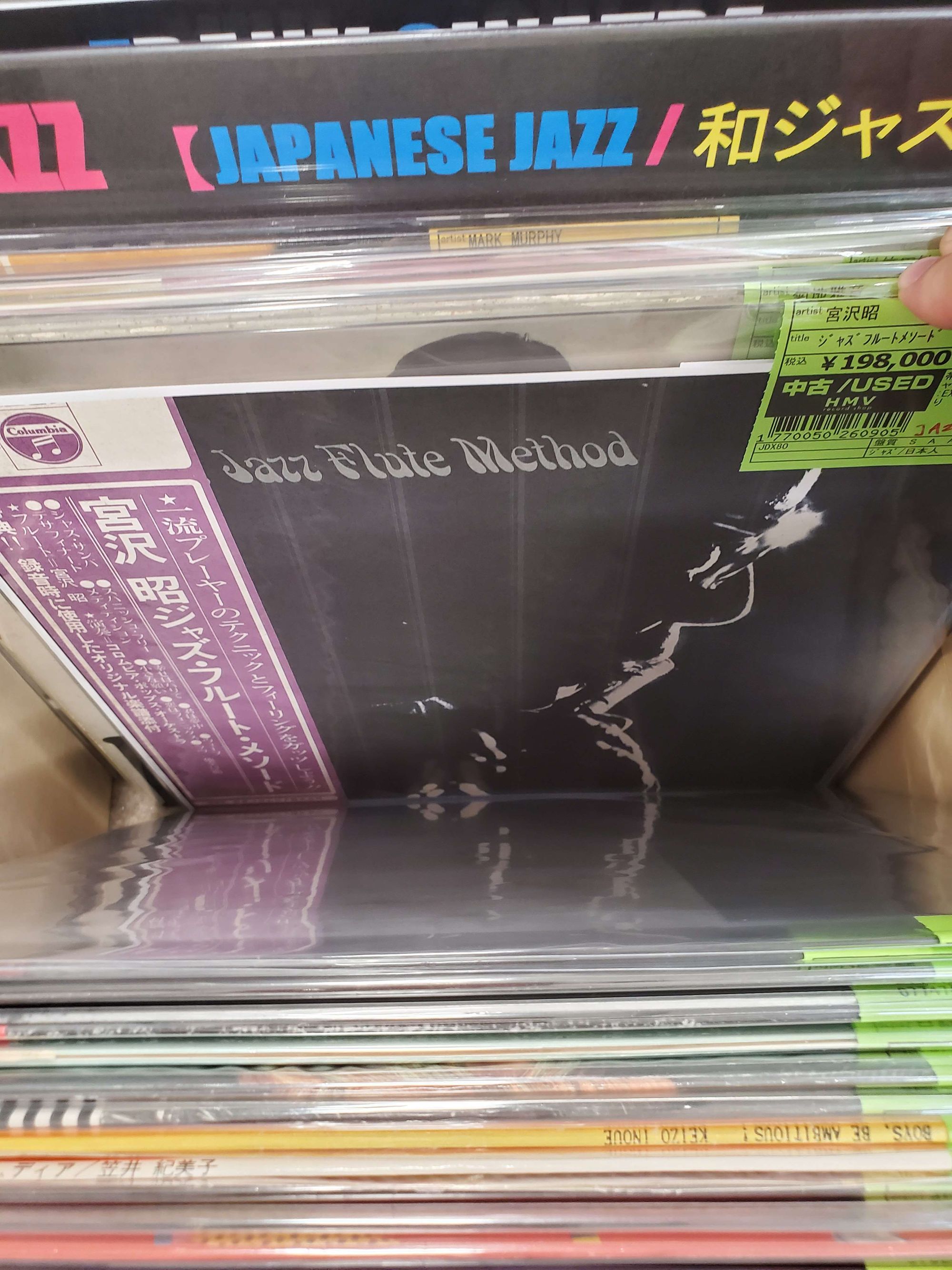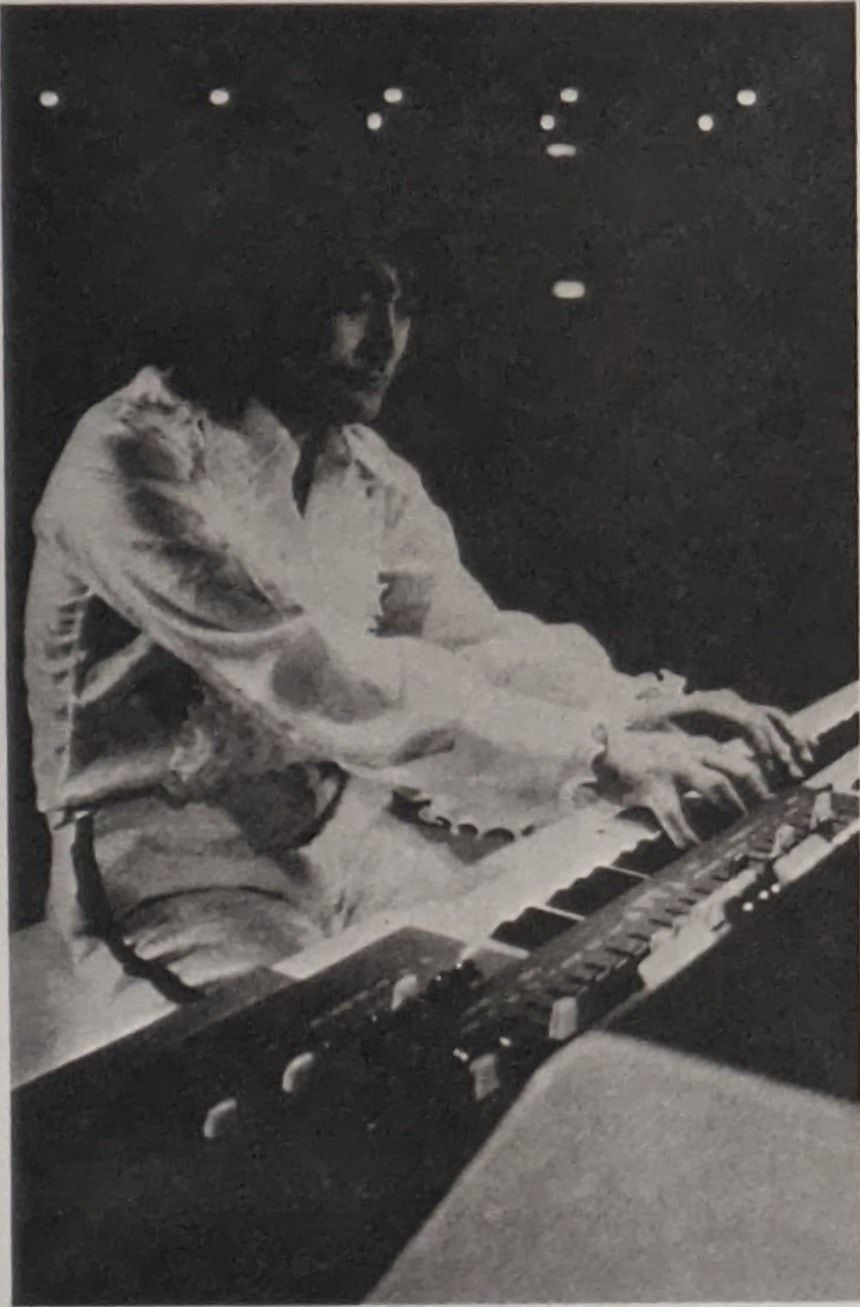Masa Matsuda - Plays GX-1 [Canyon, 1975, LP]
As you can tell from my other posts on this blog, I'm a huge enthusiast in forgotten synthesizers and the people who used them, with a particular emphasis on Electone models. As I explained in the previous Electone-related post, the Electone is a direct predecessor to the synthesizers that would become mainstays in popular media, either via the DX-7 and CS-80 fueling every synthwave and city pop enthusiast's dreams, or the YM2612 and its relatives powering Sega's arcade and home console sounds. The difference of the Electone compared to other synthesizer assemblies that makes it so enchanting to me, is the fact that it is ultimately still an organ, and therefore encourages the player to be their own accompaniment, using both hands and their feet to create a lively soundscape live, all at once. And that's how we get to this record.
I was out in Tokyo in September of this year, and of course one of the stops was to go to Shibuya to hunt a few things for my friends and, on the way, hunt stuff for my own. Shibuya is dense, overwhelming, and the record stores really worth chasing in it are hidden in plain sight, like Manhattan Records, which pops out in a corner and has an incredible hip-hop selection.

It truly is a wonderful place - if you're a hip-hop enthusiast and you're anywhere near Shibuya, go there and be amazed
On the way back from Manhattan Records I spotted an HMV branch that was quite spacious. The main draw was the new vinyl rereleases from Tatsuro Yamashita that had just come out that week, but I was there for the used sections. The J-pop section had a record that caught my eye immediately that I will discuss at a later date once I'm able to finish up more research on it, and while it was tempting to leave right after such a find, I went upstairs and was faced with a fundamental truth I wasn't aware of before then: buying Japanese jazz in Japan is actually kind of hard. The Japanese jazz section is a sliver compared to the space occupied to foreign (read: mostly American) jazz, and even the space at HMV was actually pretty big compared to the tiny little fraction seen at the enormous landmark Tower Records just down the road, where if it wasn't for the help of one of the clerks I would've just missed it entirely. There were some absolutely amazing cuts up here at jaw-dropping prices...

This record is truly phenomenal, it floored me. I can understand why people would pay so much to have such an exquisite work
...and this record right here, which caught me immediately as I'd been looking for more performances on the GX-1 for years, and there it was, clear as day, for a price so low I genuinely forget how much it was beyond being lower than the original sticker price of ¥2000. The GX-1 is, in many respects, a pioneering instrument allowing people to layer sounds live in ways that wouldn't be commonplace until MIDI had really gotten going, and its unique sound that rings as though a Sega Genesis is playing in the mid-70s has always intrigued me ever since I heard Keiko Ohta's baffling but entrancing cover of Sunny on the GX-1, further deepend by the knowledge that one of the ~100 total produced somehow made its way to the hands of Venezuela's pre-eminent organist, Tulio Enrique León. So, I had to buy this record, no matter what.
And now, after a few tumultuous months where I've been traveling and been disrupted too much to make high quality rips, I am happy to report that I'm very glad I did.
Matsuda is, above all else, elegant. His arrangements are so light and airy, it feels like he's floating above the keys, delivering utter delight. The album opens with such a captivating ethereal feeling, that I was immediately stunned and locked in for the whole thing. This is one of those albums that from the first measure, you know there's something really special going on.
Side A I think is the stronger of the two. The flow from Ebb Tide into Scarborough Fair is so perfect as to be nearly imperceptible, his arrangement of El Bimbo drags out a sweetness that I didn't realize could be in there, and A Whiter Shade of Pale becomes downright majestic. All this beauty, played by one man, all at once, sitting down at the endless possibilities of the GX-1 alongside drummer Akira Ishikawa, who wanders in and out of the record, just as ethereal as Matsuda. I especially like his lively beat on El Bimbo - it's quite rare that organists choose to have a live percussion accompaniment for this piece, and I think it was the right choice, as it leaves Matsuda with a third layer of sound at his fingertips.
Side B still has standouts, like Micalizzi's The Last Snow of Spring Time (L'ultima neve di primavera) which takes on new flight here, and a dazzling arrangement of Antonio Carlos Jobim's Wave that goes far beyond the bossa nova standard and explores variations I don't think I've ever heard from it before.
I really adore this record. I didn't know what to expect from it, and I was absolutely blown away. Give it a chance for yourself, let yourself sink in, and whether you know these songs and are hearing new takes you've never seen before, or hearing them for the first time, I know you'll enjoy them a whole lot. This absolutely belongs in the same pantheon as Koichi Oki and Shigeo Sekito's great works on the instrument, and I believe Matsuda to be the most elegant arranger of them all.

Masa at the Electone. I wish I could use the much livelier color picture from the back cover, but I cannot figure out how to remove the obi strip from this record without destroying it. They used to make them really well in 1975!
Liner Notes
Translation by hinata.yume on Discord. Message them if you need something translated! They do great work!
One neat thing I learned from the liner notes that I don't believe any online source currently cites, is that Masa Matsuda studied under Koichi Oki, one of the first masters of the Electone known for his incredible arrangements of Vivaldi's Four Seasons. Oki was the first generation of Electone masters, and Matsuda is the second generation that started in the era where the Electone went from organ to synthesizer system with fully customizable patches that just happened to be shaped like an organ.
The brand-new world of music opened by GX-1.
A few words on GX-1.
Thanks to its wide variety of tones and simplicity of ensemble effects, many people came to love Yamaha Electone, and learned minute intricacies of these electronic keyboards. At present, this model has earned international recognition as an exemplary electronic organ. A lot of research has been conducted in 15 years since its initial release in Showa 34 (1959). Engineers of Yamaha used the results of their research to produce a new Electone with much more natural and rich-sounding tones. Said new model, GX-1, was used to record this album.
GX-1 has been designed around the core idea of "natural sound". For example, lifespan of a human consists of their birth, life, and death. The same is applicable to the world of sounds: a sound is created, has a certain duration, then fades. Additionally, a sound's expression (tone) changes with the passage of time. Previously, electronic organs used to create sustained waveforms in order to synthesize tones. However, GX-1 records the changes in tone over time, thus creating more natural sounds. That's what adds glistening radiance to each individual sound, and makes them resonate in a lively harmony.
A synthesizer system utilizes the sonorous principles to produce this "natural sound". This system consists of an oscillator which produces the sounds, a wave filter which creates tones, and an amplifier which amplifies the sounds. Together, said elements are controlled by a voltage control system. Consequently, GX-1 doesn't have a tone lever which is present in older Electone models.
Tone modules installed in the body of the instrument control the tones using preset elements of sound change. The performer can use the tone selector to pick a tone appropriate for the overall melodic motif. Usually, GX-1 performers use tone modules from a standard tone array table. Being a revolutionary electronic keyboard, GX-1 also allows the user to freely create original tones.
Matsuda Masa, who recorded this album, used both standard tones and custom, original modules to create the most appropriate sounds for the overall melodic motif. We hope you enjoy Matsuda Masa's dynamic and sensitive performance, as well as the richness of the tones produced by GX-1.
Ebb Tide
Robert Maxwell, a harpist, joined the Coast Guard in World War II. Apparently, this song is based on his experiences out in the sea. "La mer" by Debussy became an inspiration for my arrangement of this song. The intro which was originally performed on strings in a manner resembling raging waves, has been changed into an electronic melody. The strings in the part leading to the climax have been used to invoke the image of waves crashing in spray. Is the sound of the GX-1 electronic orchestra up to your liking?
Scarborough Fair
This hit by Simon and Garfunkel has a very beautiful melody, and resembles a prayer with its pure spirit. Both in arrangement and performance of the melody, I took extreme care to preserve the mood of this song. I wanted it to sound like a monologue of a lonely soul...
El Bimbo
This is Paul Mauriat's most recent hit. Despite its generic chord progression, this melody is truly bright and cheerful. Flute, brass, bass guitar, strings and drums of the GX-1 electronic orchestra have been arranged in a manner which highlights the dialogue between the strings and the flute. Additionally, I made the brass section more lively.
The Shadow of Your Smile
Theme song from "The Sandpiper", a movie starring Elizabeth Taylor and Richard Burton. I played it as a light bossa nova. The first half of the theme is performed freely like a ballad, followed by a chorus and flute improvisation.
A Whiter Shade of Pale
A hit song from 1967 by the English rock band, Procol Harum. This is a beautiful song with classic harmonic progression. The vocal theme has been performed with synthesizer tones, while the intro has been performed with strings and electronic sounds. The theme is followed by 8-measure sections, synthesizer improvisation, string variations I and II, and concluded with a reprise of the theme.
The Exorcist
Theme song from a popular horror movie, The Exorcist. The bell melody which can be heard in the beginning and at the end of the song is Dies Irae, an old church music used in Symphonie Fantastique by Berlioz. It perfectly matches the mood of this theme song. When the church bells gradually quiet down, the sound of distant demonic laughter approaches. Then the black sabbath begins.
The Last Snows of Spring
To outline the story of this movie, the moment a father and son finally obtain happiness they've been striving for, they are cruelly separated again. The death of a cute freckled boy brought tears to my eyes. The melody was originally calm and quiet, but this record features a dramatic arrangement. The middle part of the theme was originally played in minor key, but I changed it to major key.
Stella by Starlight
A jazz standard number, made famous by Miles Davis. It has been arranged as an opera interlude. The first six notes of the theme are used as a central motif of this composition, with Debussy's Clair de Lune inserted in the middle as a free improvisation.
Wave
A famous Bossa Nova song composed by Antonio Carlos Jobim. I imagined an electronic harp singing and freely floating on the waves.
Bali Ha'i
A song from a musical "South Pacific", by a famous team of Richard Rodgers and Oscar Hammerstein II. It is arranged with brass strings, electric harp, and bass, with brass strings playing a central role.
(By Matsuda Masa)
Matsuda Masa's profile:
Born in Takarazuka City, dropped out of Tokyo University of the Arts.
Matsuda Masa has 15 years of experience playing piano. He was charmed by the sound of the Electone, and mastered the instrument by himself. He studied under Oki Kouichi and Kitano Tadao. His favorite musicians are Miles, Takemitsu Tooru, and Oki Kouichi. His music blends elements of jazz and contemporary music, and he is considered to be an up-and-coming star of the emerging Electone scene.
Musical career:
Winner of the 9th Electone Grand Prix in 1972. Winner of the 1973 Annual Grand Prix. Matsuda Masa provides extensive guidance to junior performers at concerts. In 1975, he taught courses for Australian Electone teachers. He held concert performances in Melbourne, Sydney, Brisbane and so on.
Track List and Rip
Note there's a slight skip in A5. I've had pretty bad luck getting around skips lately, and I think this is fine enough as the beauty of the track still comes through, and this is otherwise a very clean copy.
Minor processing was applied using iZotope RX.
I think the translations of the song titles are interesting, so I've put them here in the blog post, but I didn't add them to the ID3 tags. I hope that's okay. When the JP title is just a katakana rendition of the title, I left it blank. Why L'ultima neve de primavera is rendered as "merry go round", I have no idea, but that's what it says.
A1 - Ebb Tide (ひき潮) (R. Maxwell, C.Sigman)
A2 - Scarborough Fair (P. Simon)
A3 - El Bimbo (オリーブの首飾り) (C.Morgan)
A4 - The Shadow of your Smile (いそしぎ) (P.F.Webster, J.Mandel)
A5 - A Whiter Shade of Pale (青い影) (K.Reid, G.Brooker)
B1 - Tubular Bells from "The Exorcist" (M.Oldfield0
B2 - The Last Snow of Spring Time (メリー・ゴーランド) (F.Micalizzi)
B3 - Stella by Starlight (星影のステラ) (N.Washington, V.Young)
B4 - Wave (A.C.Jobim)
B5 - Bali Ha'i (R.Rodgers, O.Hammerstein II)
Get the album here!